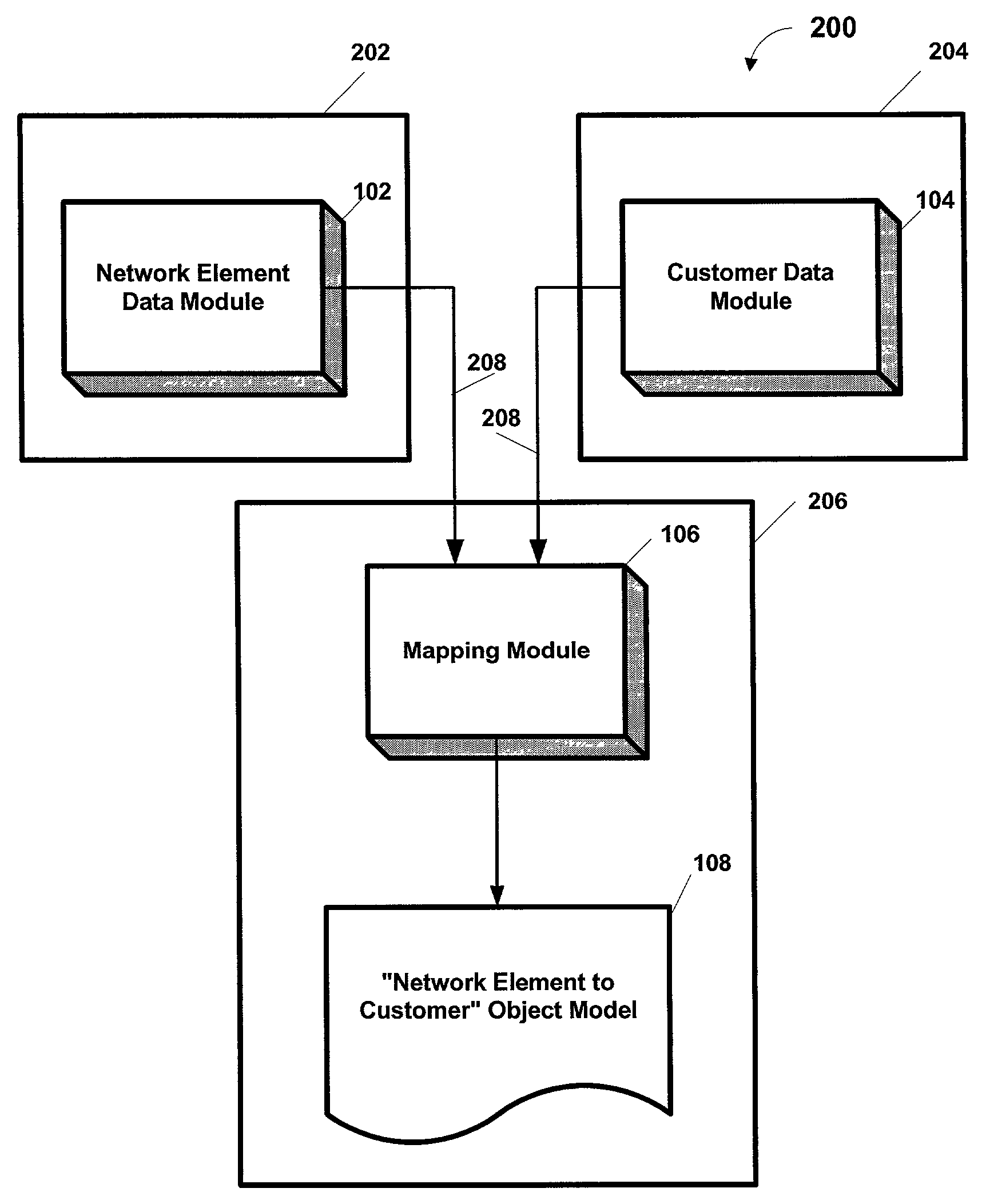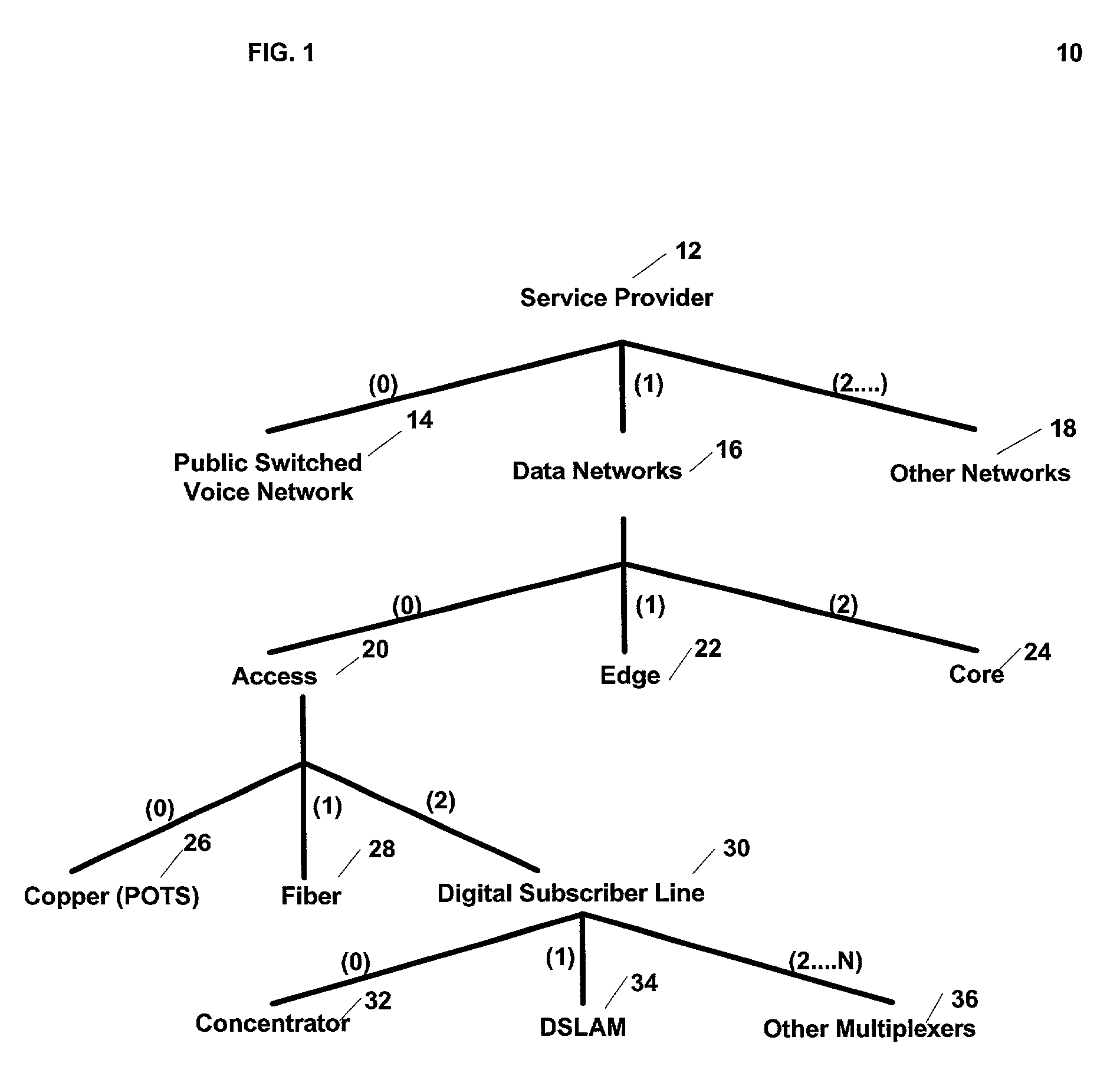System and method for bi-directional mapping between customer identity and network elements
a customer identity and network element technology, applied in the field of object-oriented applications, can solve the problems of service provider's inability to relate the failure of a network element and persist, and achieve the effect of facilitating bill preparation
- Summary
- Abstract
- Description
- Claims
- Application Information
AI Technical Summary
Benefits of technology
Problems solved by technology
Method used
Image
Examples
Embodiment Construction
[0024]It is to be understood that the figures and descriptions of the present invention have been simplified to illustrate elements that are relevant for a clear understanding of the present invention while eliminating, for purposes of clarity, other elements. For example, certain system details and modules of certain intelligent platforms are not described herein. Those of ordinary skill in the art will recognize, however, that these and other elements may be desirable in a typical network. A discussion of such elements is not provided because such elements are well known in the art and because they do not facilitate a better understanding of the present invention.
[0025]FIG. 1 illustrates an exemplary relational structure of objects stored in a network element database. In the network illustrated in FIG. 1, service provider 12 has the following subclasses: public switched voice network 14, data networks 16, and a collection of other networks 18. The subclasses may also be defined i...
PUM
 Login to View More
Login to View More Abstract
Description
Claims
Application Information
 Login to View More
Login to View More - R&D
- Intellectual Property
- Life Sciences
- Materials
- Tech Scout
- Unparalleled Data Quality
- Higher Quality Content
- 60% Fewer Hallucinations
Browse by: Latest US Patents, China's latest patents, Technical Efficacy Thesaurus, Application Domain, Technology Topic, Popular Technical Reports.
© 2025 PatSnap. All rights reserved.Legal|Privacy policy|Modern Slavery Act Transparency Statement|Sitemap|About US| Contact US: help@patsnap.com



